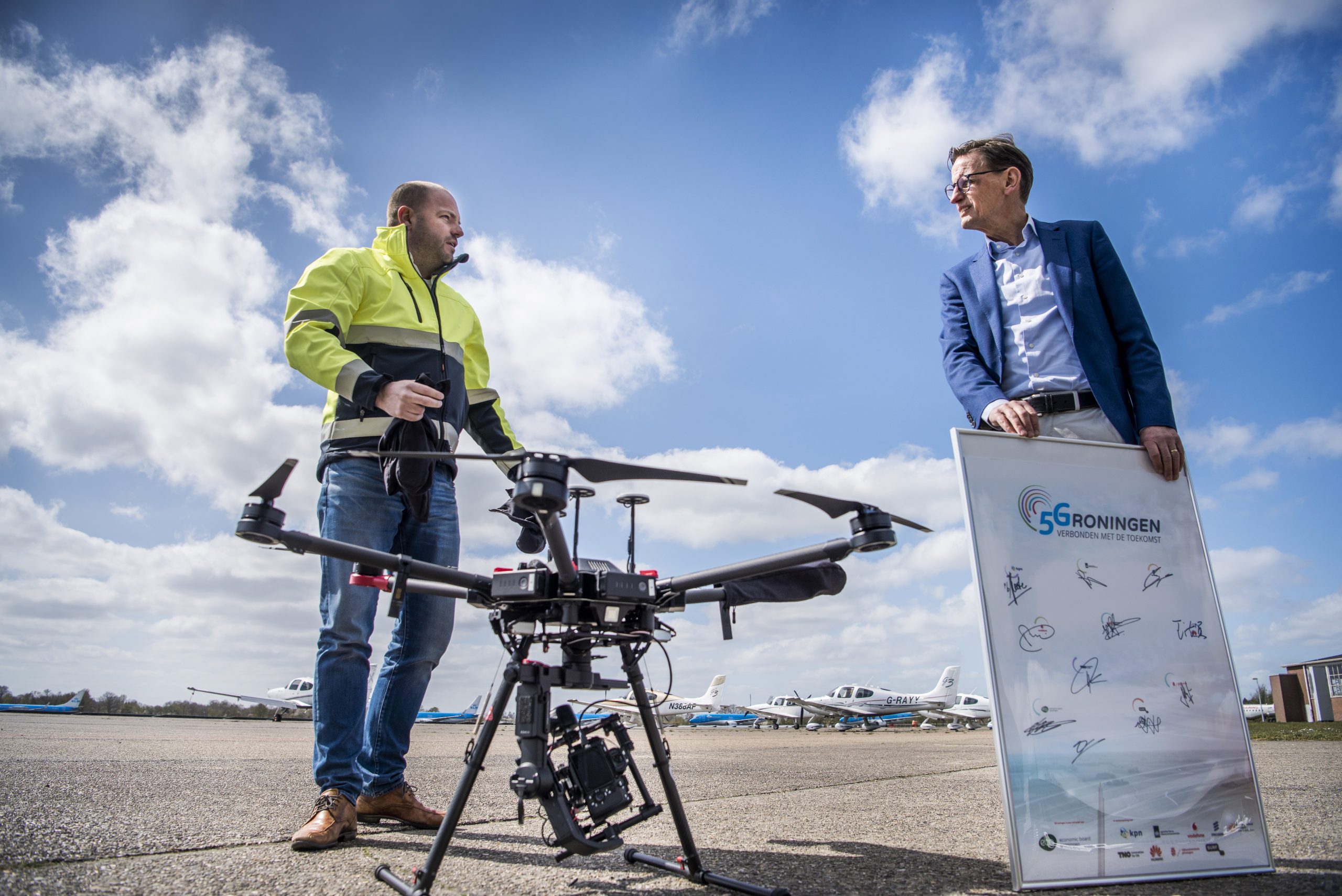
From a smart image connection in ambulance care to drones over the sea. 5G internet is the future. 5Groningen, a living lab in this northern province, is experimenting with applications of the new mobile internet. Program manager Peter Rake talks about the many possible applications.
In Groningen, a group of experts, non-profit organizations and entrepreneurs are working together to test applications of 5G. Economic Board Groningen initiated the 5Groningen program with the goal of making leaders in their sector out of SME companies in Groningen using 5G. “We want to strengthen companies and drive innovations,” says Peter Rake, manager of the program. Using four examples, he explains how 5G can be deployed and what tests are being carried out.
A smart image connection for ambulance care
One example is a test with a smart image connection and 5G in ambulance care. This way it can be determined more quickly whether a patient needs to be transported to the hospital. “Sometimes elderly people are transported by ambulance to the hospital when they really don’t belong there, but in a nursing home, for example. We can have patients diagnosed remotely by a specialist while they are still in the ambulance. Using images and sound, the doctor can see whether they need to be taken to the hospital. Now it is often the case that it is uncertain whether patients need hospital care. Sometimes, for example, it is a severe case of the flu. In that case, the elderly person can be better cared for in their own environment.”
In addition, 5G can be of great help to the independently living elderly, for instance by means of an alarm button that they can press if something goes wrong. “With 5G, they can use it not only inside but also outside the home if they need to.” Something as simple as a “smart lock” on the door of elderly people is also made possible by 5G. “For example, if an elderly person has mild signs of dementia and no longer knows how to get into their house, a caregiver can open the lock remotely via the 5G network and let them in.”
5G and agriculture: the ‘smart potato’
Applications of 5G are also being tested extensively in agriculture. For example, 5Groningen is experimenting with smart sensors in the ground, also called the ‘smart potato’. “We are working on precision agriculture for seed potatoes: a high-value crop grown as seed potatoes to grow potatoes for consumption. The smart sensors under the ground can give the farmer information at any time about the temperature and humidity of the soil.” Above ground, too, the farmer is given a helping hand. “Think, for example, of drones that give insight into the vitality of a crop and about the need for disease control. 5G can support the drone through a stable wireless connection.”
Drones through 5G over the sea
In addition to agriculture, 5G drones are being used for logistics work at sea. “They can be used at wind turbine platforms in the North Sea. It is very exciting to fly a drone in places where the pilot cannot see. 5G allows for remote control and also lets the pilot watch from a camera on the drone. You then see on a screen whatever the drone ‘sees.’ The pilot can then watch along in real time.”
5G and the monitoring of outdoor water by company 4D Dataservices
Rake himself gets very excited by the application of 5G in monitoring the outdoor water of Groningen, an innovation of the company 4D Dataservices. Until now, the quality of outdoor water, such as in lakes or ponds, has been measured by means of large, floating yellow buoys weighing 30 kilograms. The buoys are equipped with huge batteries and a solar panel. Soon, that may no longer be necessary. “Those buoys work with 4G, and that requires an awful lot of power. 5G buoys work exactly the same but with a sensor system 30 centimeters in size. The system is a hundred times cheaper, and on top of that, it’s half underwater. What would you rather have: a lake full of yellow buoys or a few invisible anchors? These 5G applications do an awful lot of good for the looks of the landscape.”
From 5G prototype to mass production
Next time, the living lab will focus on converting prototypes to mass production. “Just look at the application of 5G in ambulance care that I mentioned, such as smart glasses for ambulance staff. There are still quite a few steps needed to implement those in daily use. If a nurse is wearing an earpiece to communicate with a doctor, they can no longer use a stethoscope. Efforts are now being made to send the sound via a speaker in the frame of the glasses themselves. This is just one example of many.”
All in all, there is plenty of work to be done in the coming years. According to Rake, it’s definitely worth it. “These innovations with 5G will ensure that Groningen is even better prepared for the future.”
See also:
Shortages in IT: ‘Even Archaeologists are being retrained’
Port of Lauwersoog on track to go green with ‘completely independent hydrogen supply chain’
The Groningen region is experimenting with hydrogen. ‘We want to scale up’
Old bus as a classroom: A sneak peak at the ‘creative Suikerterrein’ in the Dutch city of Groningen

